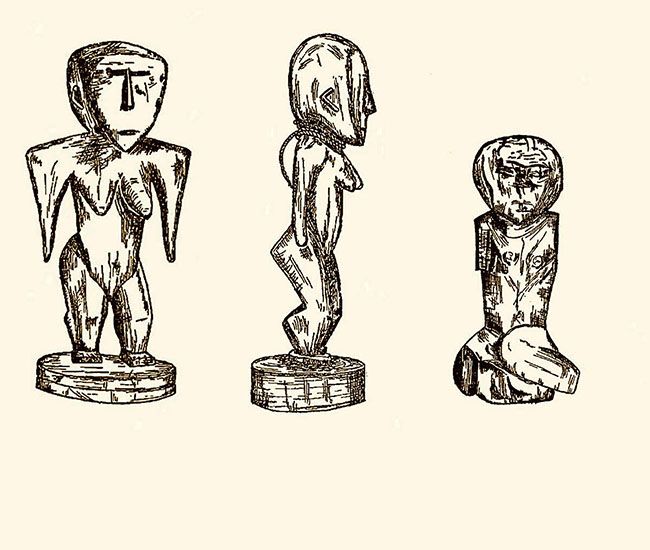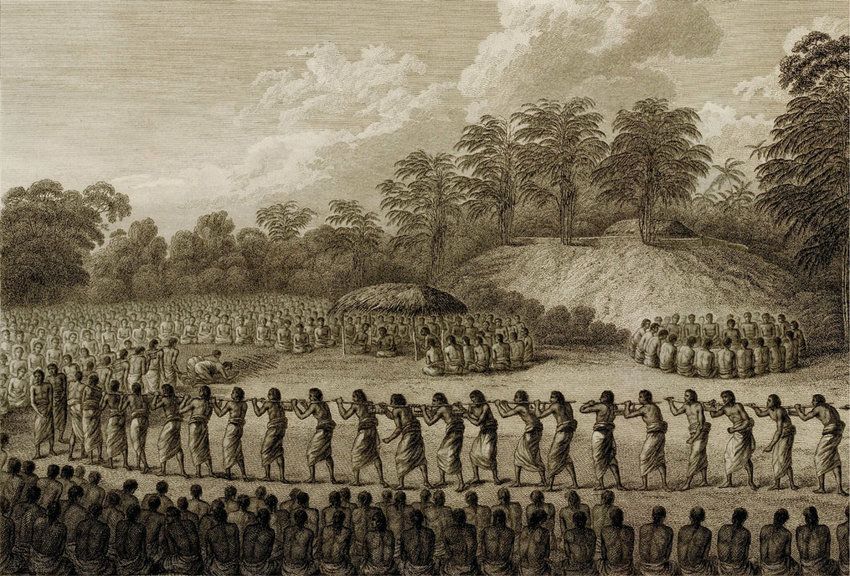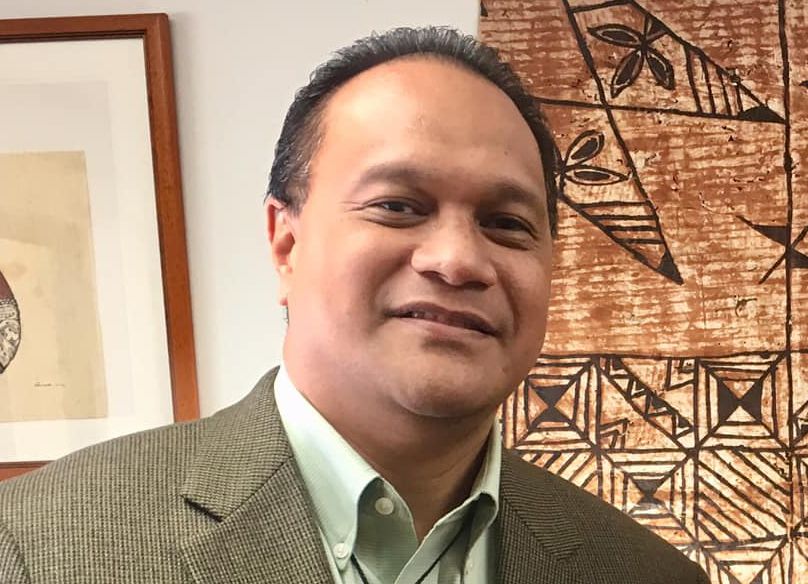

An academic looks at the link between indigenous spirituality and our modern lives.
Auckland Museum/Research Gate
Tonga’s ancient gods and the 21st century
Can Christianity and ancient Tongan deities coexist? A scholar explores Tonga's creation story and modern connection to the land.





Father of 12 killed in US church shooting as police hunt for gunmen





Father of 12 killed in US church shooting as police hunt for gunmen
Before Adam and Eve, Tonga had Hikule'o, Tangaloa and Maui as star characters in their creation story.
Tēvita Ka'ili (Kolofo'ou/Neiafu/Koloa in Tonga) is a professor of anthropology and cultural sustainability at the Brigham Young University in Hawai'i and is researching the link between Tonga’s ancient gods and our modern connection to the land.
“Our ancestors came out of the fonua (land), and in the Tongan creation story, the ocean was at the beginning and from the ocean emerged the first ancestors.
“So we have this genealogical tie to the ocean and also to the land. Therefore as kin, we have a responsibility to take care of the ocean and all the marine life in the ocean and also to the land, fonua and all of the life forms in the fonua.”

Drawings of three Tongan gods gathered by Taufa'ahau in Ha'apai 1830. These are taken to be images of Hikule'o. The central figure is the one given to John Williams. The remaining two are assumed to have been among four others given to John Thomas. The seated figure has been heavily mutilated. These carvings now reside in the Auckland War Memorial Museum, New Zealand. Drawings: 1937 publication by Te Rangi Hiroa in the Journal of the Polynesian Society (46, no 2).
Tonga’s genesis
There are several variations of the creation story, but many will recognise similarities with other cultures, said Ka’ili.
“The beginning of Tongan creation story started with vahanoa, which is the ocean, and out of the ocean emerged two ancestors, Limu, which is seaweed and Kele, which is sea sediment or sea mud.”
Limu and Kele lived in Pulotu, the ancestral homeland, and they produced a metallic rock called Touia’o Futuna, who had four sets of twins who gave birth to the ancestors of Tonga’s most important deities, Hikule’o, Tangaloa and Maui.
In Tongan legend, Hikule’o threw stones into the ocean that created the volcanic islands of Kao, Tofua, Late, Fonualei and Hunga Tonga-Hunga Haʻapai that erupted in 2022. The other coral islands were dragged out of the ocean by Maui’s famous fishhook. Tangaloa’s descendents became the first line of Tonga’s Kings, the Tu’i Tonga empire.
Missionaries and Matariki
“Hikule'o was the god of fertility, but also the afterlife, so both life and death was her domain”, said Ka’ili.
Wooden carvings of Hikule’o show a squatting, bare-breasted figure, but these were almost completely wiped out with the arrival of Christianity in the mid-1700s.
“In Tonga, there was a deliberate destruction of all the images of the old ‘Otua, which is the deities and the ancestors. During that destruction, not only the images were destroyed, but also the stories that were associated, and segments or small pieces or fragments of the stories were passed down.
“After the destruction of Christianity in Tonga, most of the images of Hikule'o were taken by Christian missionaries, as souvenirs, and they were donated to museums.”

People carrying yams at a first fruits inasi ceremony held at Lapaha in 1777. Drawing by John Webber/ResearchGate.
Worship of the goddess Hikule'o was banned, but Ka’ili said katoanga ‘inasi, the yam harvest celebration, held similarities to New Zealand's Matariki.
“During the rise of Matali’i in June, people would bring their harvest to the Tu’i Tonga, the King of Tonga.
“Tu’i Tonga is a descendant of Tangaloa, but represented Hikule'o, so it was a form of giving this harvest so that there would be a return in the next season and so forth.
“Tonga actually had two katoanga, or two celebrations: one in June, the rising of Matariki in the early morning, and also one in November, when Matariki rose in the evening.”
How does this apply to our modern day lives?
The relationship between Hikule’o and the brothers is still celebrated in Tongan culture.
“Tangaloa and Maui were always very respectful to Hikule'o, their eldest sister,” said Ka’ili.
“Even today in Tonga, the eldest sister of the father is still held with high regard and so many scholars believe that this was the beginning of the fahu and the mehikitanga system that started from our creation story.”

Dr Tēvita Ka'ili. Photo/Brigham Young University, Hawai'i
The rise of capitalism has caused a rift between humanity and our natural environment, said Ka’ili, who warned of the harm caused by this disconnection.
“Nature becomes just an object, it becomes a commodity, it becomes just something that is not alive to us, whereas our ancestors would see it as something that was very alive and that we're related to, and that our survival is dependent on their survival, also that we are connected and there is a reciprocal relationship between us and them.
“By being disconnected and only seeing it as something to be used as a resource to extract, then there's no reciprocity, there's no balance, and it creates all the kinds of problems that we now face in contemporary society.”
Christianity vs indigenous spirituality
Ka’ili said it is possible to hold a Christian faith and still recognise Tonga’s ancient deities.
“I think they are in harmony with one another, because if you're coming from a Christian perspective and seeing that God created the world, you can also see the parallel with our ancestors and their connection to that world.
“So I don't see any conflict at all between the two. I am Christian and I hold both value and value both in the way that I see in the world, and I think it's great to bring this back because it just enriches our sense of spirituality.”
Watch the full interview on Pacific Mornings: